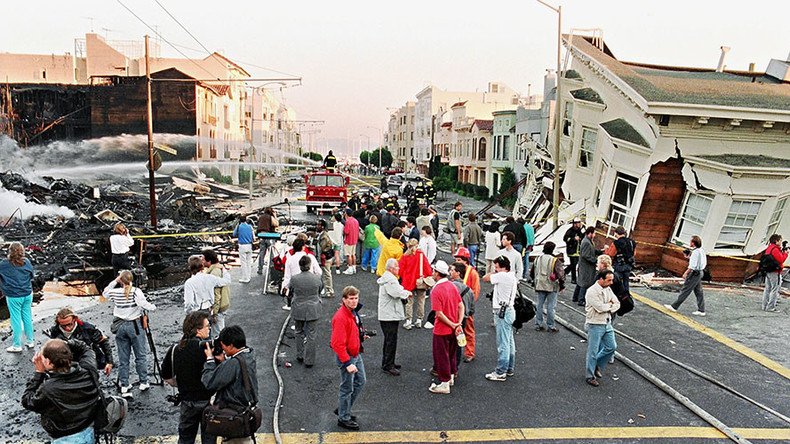California could be hit by a massive earthquake at any time, a leading seismologist warned a national conference Wednesday, potentially killing thousands of people and costing hundreds of billions of dollars.
The section of the San Andreas Fault in the Los Angeles area has been quiet for too long and Thomas Jordan believes it’s now a ticking time bomb that could produce an 8 magnitude ‘Big One’.
“The springs on the San Andreas system have been wound very, very tight... locked, loaded and ready to go,” Jordan said at the National Earthquake Conference in Long Beach, as reported by the LA Times.
Such a quake would hit areas away from the ocean the hardest like the Coachella and Antelope valleys and Inland Empire, but tremors would hit Los Angeles and San Gabriel Valley as well, according to the Times.
This section of the major faultline hasn’t produced a ‘big one’ since 1857 when a 7.9 quake shook nearly half the state.
A San Andreas shift further north in the Bay Area was the cause of the 1989 Loma Prieta quake which killed 63 people and caused up to $6 billion in damage in cities such as San Francisco and Oakland.
Deadly Devastation
A 7.8 quake in the Southern California area could result in “approximately 1,800 deaths, of which about half occur because of the fires following the earthquake” and cost $213 billion, according to a 2008 US Geological Survey.
Another 750 people would have severe injuries, the survey found, and “50,000 people will have injuries that need emergency room care.”
The death rate could further increase due to damaged hospitals not being able to function.
Other risks identified in the study included “between 10,000 and 100,000 individual landslides, the vast majority of which will consist of rock falls, rock slides, rock avalanches, soil falls, disrupted soil slides and soil avalanches.”
Close to 1,000 roads crossed the fault line at the time of the study, along with 90 fiber optic cables, 21 railroads, 39 gas and petroleum pipelines, and 32 aqueducts.
Total losses to buildings is estimated at $33 billion, and it would cost $1 billion to repair water and sewer lines. The damaged water supply would also affect firefighting capabilities. According to the study, “the worst hit areas may not have water in the taps for six months.”
Releasing Tension
It’s not just the Southern California section that’s at risk. Areas further southeast down the line haven’t experienced big quakes since 1812 and the 17th century.
The Pacific plate is moving northwest at a rate of 16ft (5 meters) each century, which is causing decades of tension to build up that at some point will need to be released.
Prepper Paradise
Jordan said it is important to prepare for such a quake, something preppers and doomsday survivalists know a thing or two about.
California has already taken steps to prepare for earthquakes, such as the apartment retrofits and aqueduct strengthening regulations that were passed by voters in 2015.
Owners have seven years to fix vulnerable wood buildings and 25 years for concrete buildings.
The Great California Shake Out drill prepares Golden State residents for the next Big One.
The Metropolitan Emergency Managers Committee created this video in 2012 to remind people that “Disaster” makes unexpected visits and “Preparedness” key.
Luckily, there are plenty of preppers on the internet who are full of tips on how to prepare for all sorts of disasters, like this handy guide for creating an "Earthquake Preparedness Bedside Kit."
Here are a few items that preppers should not buy for a disaster.
Sorry, no Pop Tarts or junk food allowed!
The Federal Emergency Management Agency (FEMA) made this humorous video in 2013 to show how being unprepared for a disaster can be, well, a disaster.
Past Earthquakes
The biggest recorded earthquake to hit California was the 1857 Fort Tejon event which ran for 186 miles along the San Andreas Fault and hit 7.9 magnitude.
It left a surface scar along the fault, but despite its strength, only two people are said to have died due to the sparsely populated area at the time.
The San Francisco earthquake of 1906 caused the most damage, when 3,000 people died.
The 1994 Northridge earthquake reached 6.7 magnitude and killed 57 people. Tremors were felt as far away as Las Vegas.
Back in 1989 the Loma Prieta Quake killed 63 people, but was best remembered for being broadcast live during coverage of baseball’s World Series.
And if you're not freaked out yet, did we mention the nuclear power plants along the San Andreas fault?

